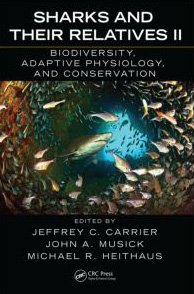Since the award-winning first volume, The Biology of Sharks and Their Relatives, published in 2004, the field has witnessed tremendous developments in research, rapid advances in technology, and the emergence of new investigators beginning to explore issues of biodiversity, distribution, physiology, and ecology in ways that eluded more traditional studies. As an entirely new companion volume, Sharks and Their Relatives II: Biodiversity, Adaptive Physiology, and Conservation brings you up to speed on these significant changes, specifically examining how elasmobranch fishes ? the sharks, skates, rays, and chimaeras ? successfully survive in a wide range of habitats. Emphasizes Conservation of Threatened Species This multidisciplinary volume begins by examining elasmobranch biodiversity patterns and their integrated sensory systems. It then explores the physiological adaptations ? from unique sensory modalities to compensatory mechanisms for physiological and environmental stress ? that make these animals particularly well-suited for the range of habitats where they are found, in both oceanic and freshwater realms. Features Established Researchers and Introduces New Pioneers in the FieldThe book then considers the human interactions and anthropogenic effects on worldwide elasmobranch populations and the potential extinction risks posed by increasing threats from changes in habitat, changes in water chemistry, and growing commercial exploitation. This text truly is unrivaled in terms of coverage and readability, and it is a must-have reference for marine biologists, fishery scientists, oceanographers, and also marine, zoo, and aquarium veterinarians. To address subject areas and subdisciplines where coverage was absent or superficial in volume one, Jeffrey Carrier and associates have assembled in the current volume a collection of works that reveal patterns of biodiversity, the physiological attributes that contribute to elasmobranchs? successful exploitation of oceanic and freshwater realms, and the unique issues associated with the interaction between elasmobranchs and humans, all of this with overarching attention to issues of conservation. “We begin with chapters examining biodiversity. We have chosen to approach this discussion by presenting elasmobranchs as inhabitants of the range of zoogeographic provinces, realizing that significant overlap may occur for more pelagic species. This realization was reflected in the dialogue that occurred during preparation of the book between our chapter authors, and the recognition that many species simply cannot be confined to a specific habitat or range of habitats. We then continue by examining some of the unique physiological adaptations that allow these animals to exploit the range of habitats where they are found, from unique sensory modalities to compensatory mechanisms for physiological and environmental stress. “Our concluding section presents some of the challenges faced by members of these groups. We have asked our authors to consider human interactions and anthropogenic effects on worldwide populations and the potential extinction risks posed from survival under increasing threats from changes in habitat, changes in water chemistry, and increasing commercial exploitation. Conservation of species under threat remains a theme throughout the book. “Our authors represent an international group of investigators including established scientists whose work has been widely published and respected, and emerging younger scientists who have exploited recent advances in technology to ask and answer new questions as well as offering new insights and interpretations to enduring problems in the fields of ecology and physiology. We have asked them to be speculative and challenging, and we have asked them to predict future areas for investigation in hopes that their work will both inspire and provoke additional studies of these fascinating animals.”?? – from the Preface
Biology
{pdf} Sharks and Their Relatives II: Biodiversity, Adaptive Physiology, and Conservation (Marine Biology) Jeffrey C. Carrier, John A. Musick, Michael R. Heithaus
$19.99






Reviews
There are no reviews yet.